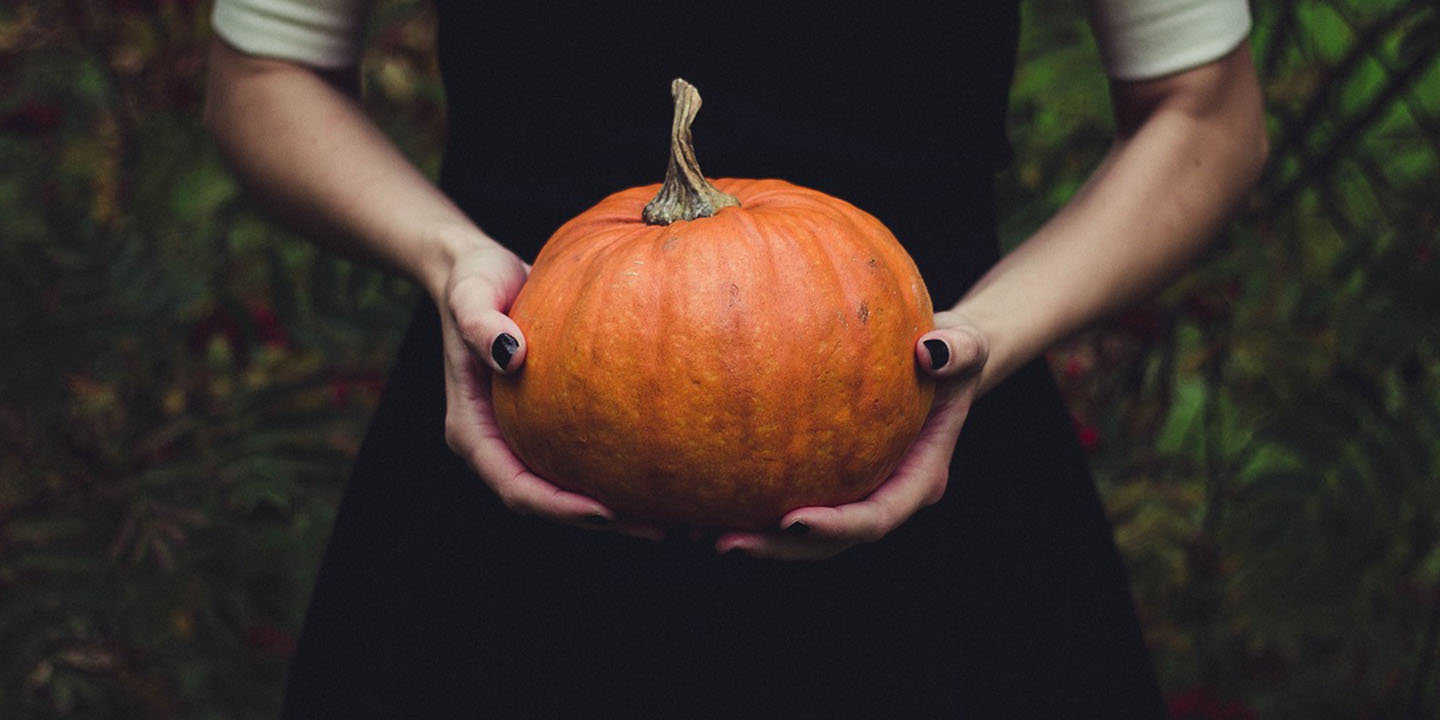The Freshest Of The Fresh
Cranberries, squash, and pumpkin everything, fall is one of the tastiest times of the year. Eating seasonally is not only a great way to step out of your culinary comfort zone by exploring new fruits & veg, but buying seasonally is also a great money-saver. Sure, your citrus fruit may not be at its freshest or cheapest, but fall opens up a whole new world of produce!
1. Figs
Maybe this is conspiratorial, but don't think it's a coincidence that a lot of fall produce is underrated. While figs are first harvested in summer, they have a second, shorter season in late autumn. They're a great addition to charcuterie board and can last all year if made into jam.
2. Apples
Apples are pretty broad as a category and different varieties have different skills. Generally, most—if not all—cultivars will be in season from late summer to late fall. Skip the mushy Red Delicious and seek out one of the rarest and most delicious varieties: SweeTango.
 Priscilla Du Preez 🇨🇦 on Unsplash
Priscilla Du Preez 🇨🇦 on Unsplash
3. Pears
Pear lovers are lucky, as their season runs all the way from mid-summer to early winter! Pears come in literally thousands of different varieties, and, like apples, excel at different things. In addition to being delicious in pies or right off the tree, you can make some delicious savory dishes with pears.
4. Celery
For a veggie that's high in nutrients, low in calories, and in season as the leaves change, celery has your back. Celery shines in soups, salads, or used as a base for ants on a log. As a bonus, don't miss out on celery root, which is also in season and great in soups.
5. Limes
Tropical fruit lovers need not mourn all their favorites, as limes are at their best in mid-to-late fall. Specifically, key limes can be found around this time. Some lime zest is a great way to inject some summer flavor into the colder months.
6. Pomegranates
Don't be intimidated by pomegranates. They're one of the best fruits available in the colder months, and they're far easier to eat than you'd think. Pomegranate season runs through October through December.
7. Tomatillos
Tomatillos are used in Southern, Mexican, and Central American cooking when they're in season from late summer to early fall. Unlike regular tomatoes, tomatillos must be peeled prior to consumption. The flavor of a tomatillo is bright and citrusy with a bit of earthiness.
8. Cranberries
No Thanksgiving spread is complete without cranberry sauce! Peak cranberry season runs from September through November, since they're one of the few commercial fruits native to North America. If you want to switch up your autumnal baking, why not try a cranberry pie?
 Henk van der Steege on Unsplash
Henk van der Steege on Unsplash
9. Arugula
Even when the leaves change from green to orange to brown, you can hold onto a little bit of that summer green with arugula. Arugula is a cool-season green that can provide a peppery crunch to salads and sandwiches. Arugula is unique among produce, as it is harvested at different times depending on where it grows.
10. Brussels Sprouts
Like broccoli—another fall vegetable, though not one on this list—Brussels sprouts are unfairly maligned. Brussels sprouts are at their best in fall, especially if they're on a stalk, which makes them last longer. People who found them bitter in childhood may want to give them another try, as the bitterness has been bred out in recent years.
11. Guava
Sweet and tangy guava is sort of like a cross between a strawberry and a pear. It's also in season in November and December if you want to give it a taste. While it's great on its own, guava can also be used in jams, jellies, and even savory dishes.
 Yuliia Martsynkevych on Unsplash
Yuliia Martsynkevych on Unsplash
12. Winter Squash
Acorn, butternut, and spaghetti squash, oh my! Those are just a selection of the many different winter squashes that start their season around this time. Roasted, flavorful squash is the perfect stepping stone between summer salads and winter stews.
13. Quince
Going back to the topic of underrated seasonal fruit, quince may be just about the most underrated out there. Native to the Caucasus, quince is similar to a pear, but not quite. In season from September through December, quince is best served poached or in jellies.
14. Garlic
Did you know that garlic has a season? We sure didn't. While garlic can be stored year-round, this versatile aromatic is at its best from late summer through fall. Give those Thanksgiving potatoes a boost with a healthy dose of garlic.
 Matthew Pilachowski on Unsplash
Matthew Pilachowski on Unsplash
15. Parsnip
With a peak season from October to March, parsnips are sort of like if a carrot and a potato had a baby. Parsnips are great roasted or cut into fries with a starchy texture. In this case, bigger is not better, as larger parsnips have a woody core that must be removed.
16. Zucchini
While zucchini is technically a summer squash (bet you didn't know it's a squash), its season runs from late summer to early fall. Zucchini is known for its enormous versatility and can be used in sweet or savory dishes.
17. Wild Mushrooms
Wild mushrooms such as chanterelles and common oyster mushrooms are in season from late summer to mid-fall, making this a great seasons for vegetarians and vegans. However, not all wild mushrooms share the same seasons. Morels, for example, are best in April and May.
18. Kale
Kale loves the cold, the cooler the weather, the sweeter this curly green will be. Kale thrives throughout fall, and can grow into winter depending on the climate. Take advantage of the season to get this superfood at a discount!
19. Leeks
Milder and sweeter than onions, leeks are often underutilized, even though they're at their best from late summer all the way to January. Leeks have notes of onion and garlic and are great in soups or pies. As with parsnip, size can be misleading; you want a thin leek with a dark green top, and you want to thoroughly rinse it.
20. Pumpkins
C'mon, you didn't really think we were going to skip pumpkins, did you? More than any other vegetable, pumpkins epitomize the changing season. From their mellow orange color to their delicious spice and Halloween potential, we can't imagine fall without pumpkins, and neither should you.
KEEP ON READING
























